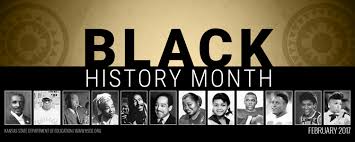
Don’t worry when you are not recognized, but strive to be worthy of recognition. – Abraham Lincoln
I read a story about a man who attended a lecture on the importance of showing appreciation to the important people in your life. Mike decided to start with his wife. So after work that night on his way home, he bought her a dozen long-stemmed red roses, a box of chocolates, and a pair of earrings. He smiled with self-satisfaction as he contemplated surprising his wife and showing her how much he appreciated her.
He stood at the front door with the roses and gifts in hand and rang the doorbell. His wife came and opened it, and stared at him for a long minute. Suddenly she burst into tears. “Sweetheart, what’s wrong?” he asked.
“It’s been the worst day of my life,” she answered. “First, Johnny tried to flush his diaper down the toilet. Then Kevin melted a plastic airplane in the oven. Then the dishwasher clogged and overflowed all over the kitchen floor. Then Jessica came home from school with a note from the teacher saying that she beat up a boy in her class. And now you come home drunk?”
Despite our best efforts, sometimes showing our appreciation doesn’t always go according to plan. It can be awkward to express and sometimes misinterpreted.
But in the workplace, let’s make sure that we understand that recognition is important. It’s what TINYpulse refers to as the secret sauce of employee engagement.
In the report, they state, “Providing recognition for excellent work is one of the best things an organization can do to maintain employee engagement”. Yet, according to the report, “only one in three people feel they were well-recognized the last time they went the extra mile at work.”
The report states that when asked more broadly about how valued people feel at work, the results we just as bleak. Only 26% of employees report feeling valued at work. This is outweighed by the 33% of people who actually feel undervalued.
If you are concerned at all about employee engagement in your workplace, you must make recognition a priority. Click To Tweet
Here are a few reasons why it matters.
Recognition matters because your people matter
It’s just this simple. And because they matter they should be recognized for the excellent work they do. I know for many in leadership the unspoken attitude may sound something like “their paycheck is all the recognition they need,” but not so fast.
According to the same TINYpulse report, 43% would leave for a 10% salary increase, up from 25% last year. If just a 10% salary increase is all it takes for an employee to leave, perhaps more recognition is in order for them to stay.
Recognition matters because your culture matters
Imagine if you will what it would be like to be in a workplace culture that is thriving, producing, and where recognition abounds for all the hard work. Culture is contagious. And a thriving workplace culture creates a momentum that is hard to beat. Click To Tweet
To be sure, no workplace is perfect even in the best of environments. But it’s easier to tackle the issues that challenge your workplace culture when your people feel valued and appreciated. Recognition plays a huge role in making that happen.
Recognition matters because your reputation matters
In the TINYpulse survey, there is a gap in how managers perceive culture and how employees perceive it. That should not come as a surprise. The survey states, “leaders make or break motivation within their team.” And this is where recognition can work to your benefit.
If your people do not feel valued or respected, then everything else you do comes across as disingenuous. Click To TweetRecognition is given to what is valued. If your people are not recognized, then it is obvious to them that they are not valued. Like it or not, your reputation as a leader is being defined on how you treat your people.
Final Thoughts
Employee engagement is critical to your success as a leader. Recognizing your people for their hard work, sacrifices, and contributions ought to come as natural to you as breathing. Recognition matters that much.
©2020 Doug Dickerson










